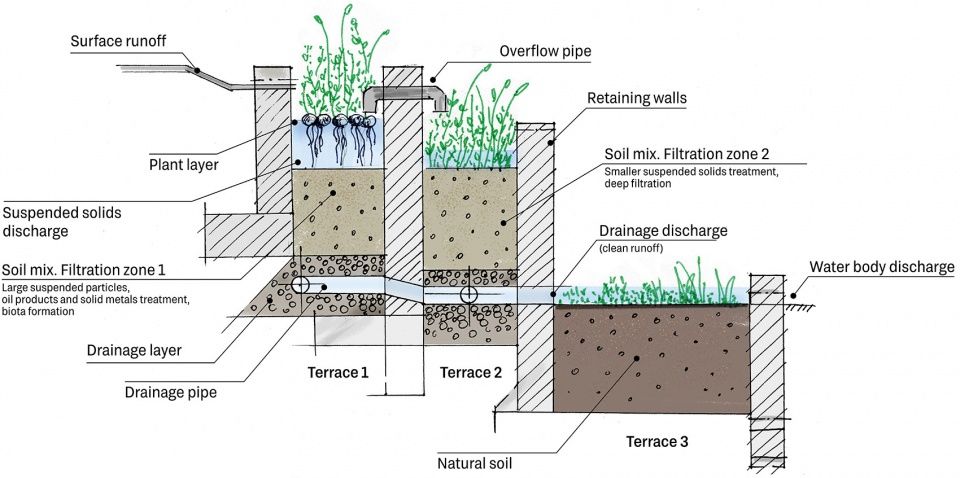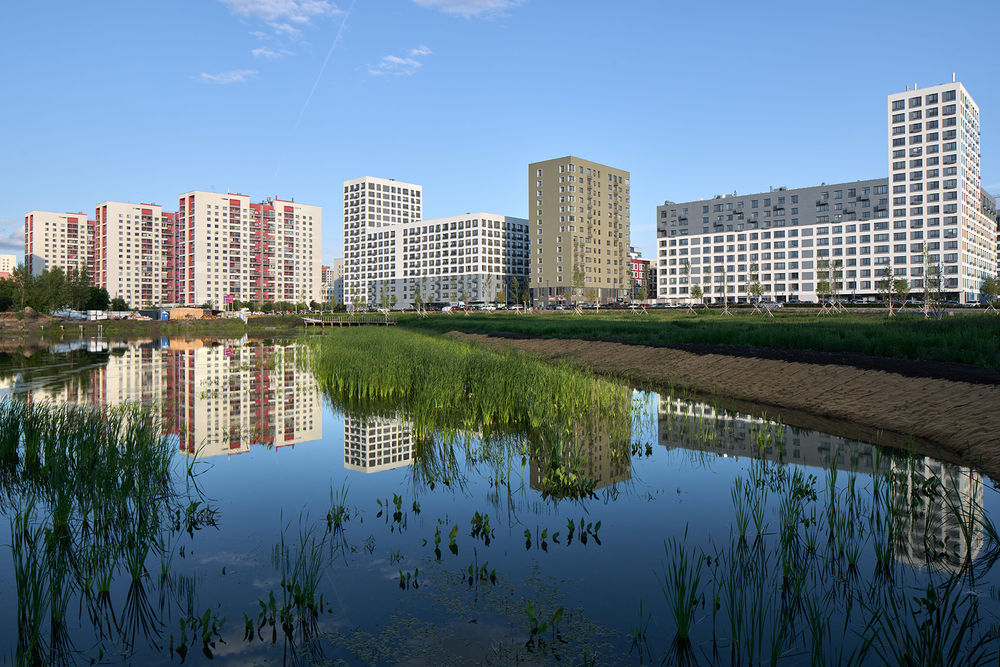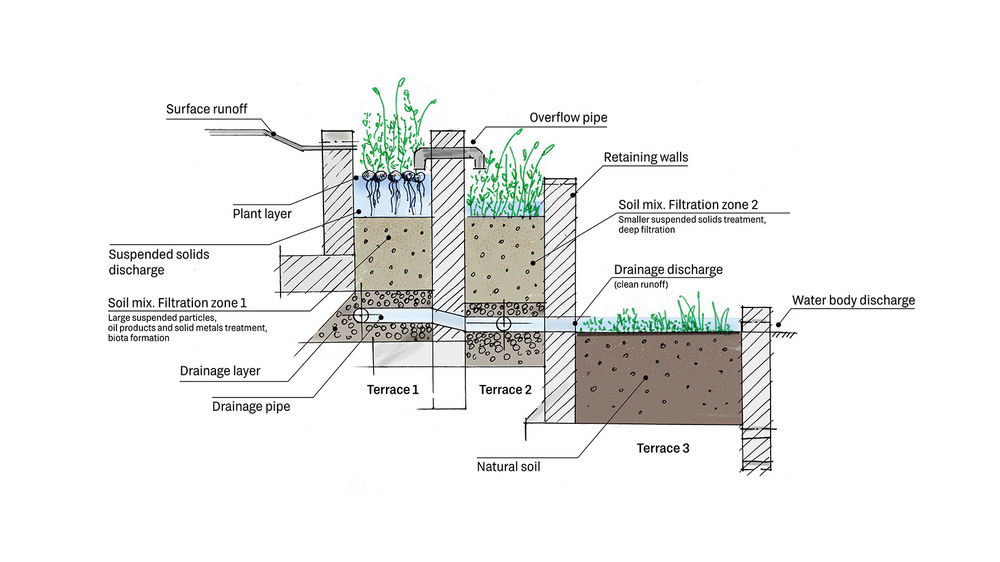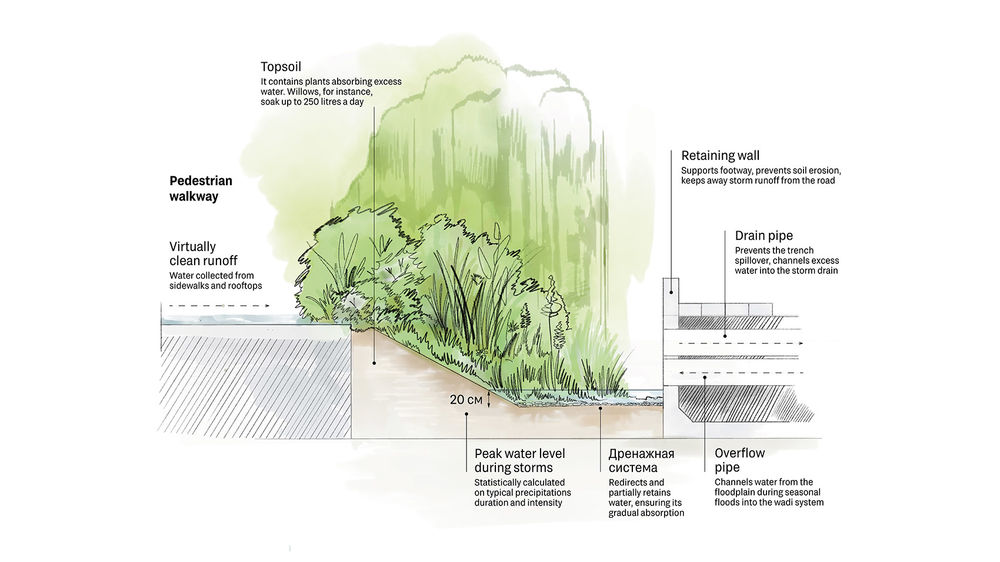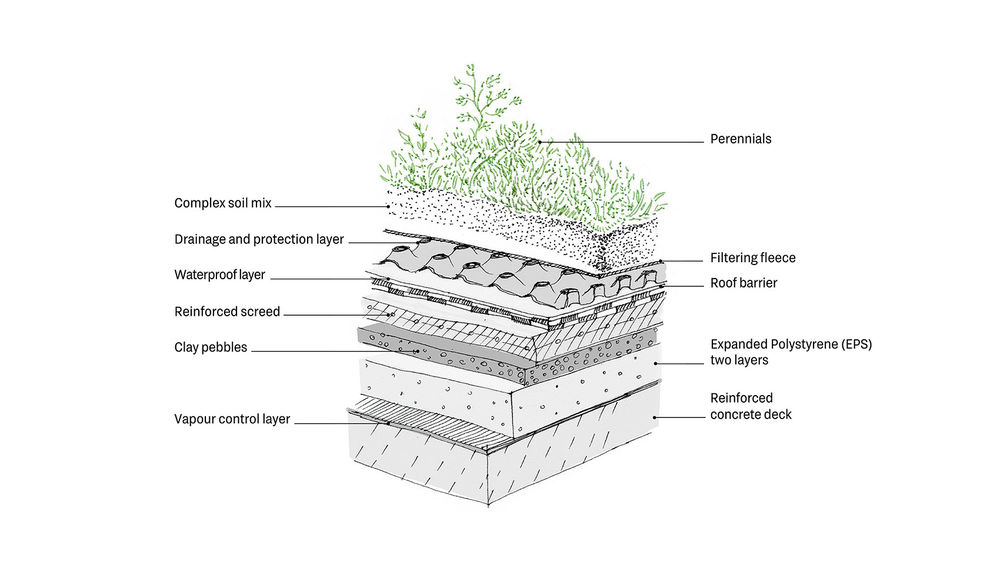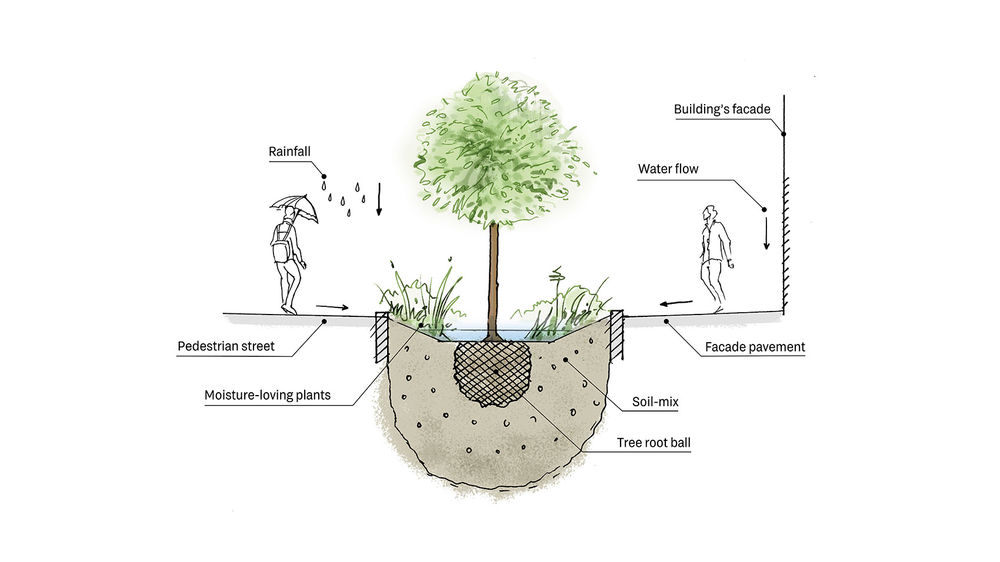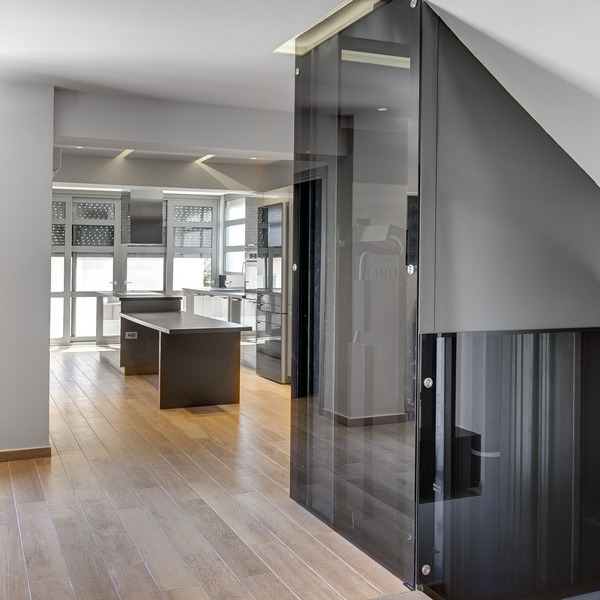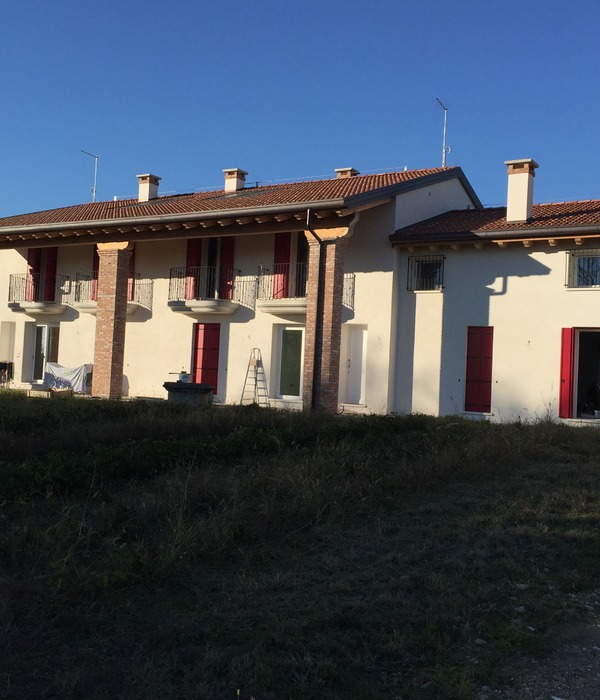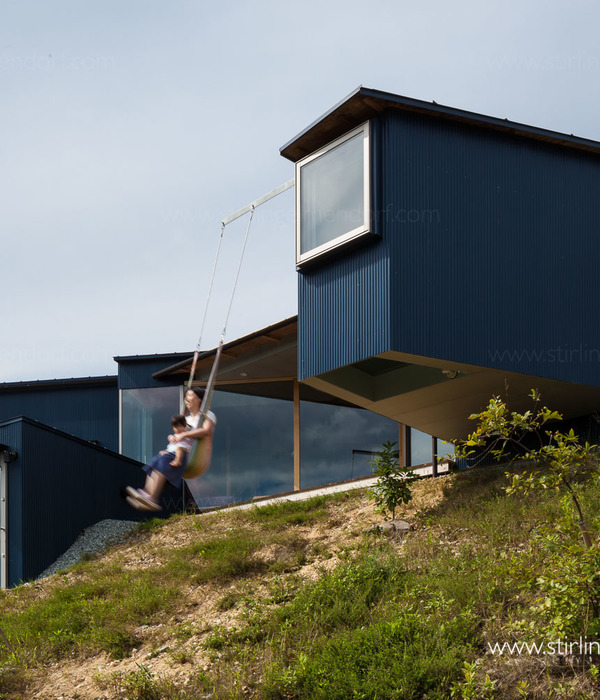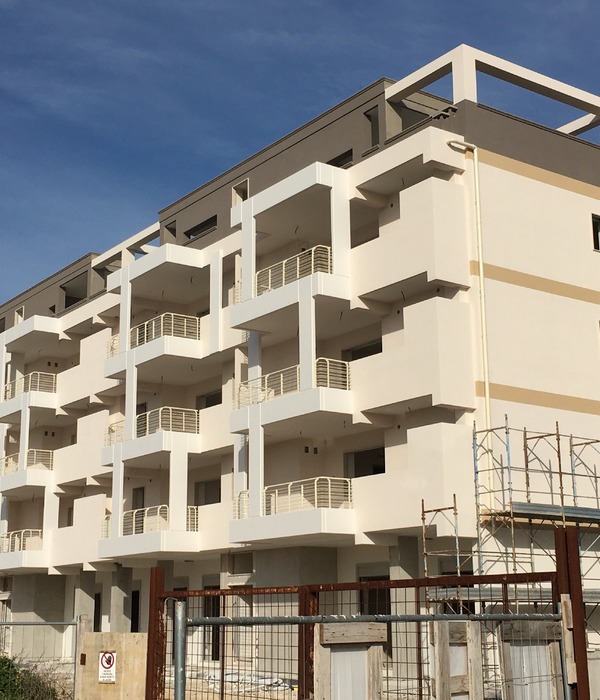俄罗斯住宅区雨水花园 | 环保与舒适的完美结合
通过引入水管理系统,俄罗斯开发商Brusnika为几个现代住宅区创造了舒适的城市环境和可持续景观,通过水来支持生物多样性和生物量,从而积极地影响气候。
By launching a water management system, Russian developer Brusnika offers a comfortable urban environment and sustainable landscape in modern residential areas. By supporting biodiversity and biomass, water benefits the climate.
▼新西伯利亚“European Riverfront”小区街道,“European Riverfront”, Novosibirsk. Street © Maxim Loskutov Ilya Teplov
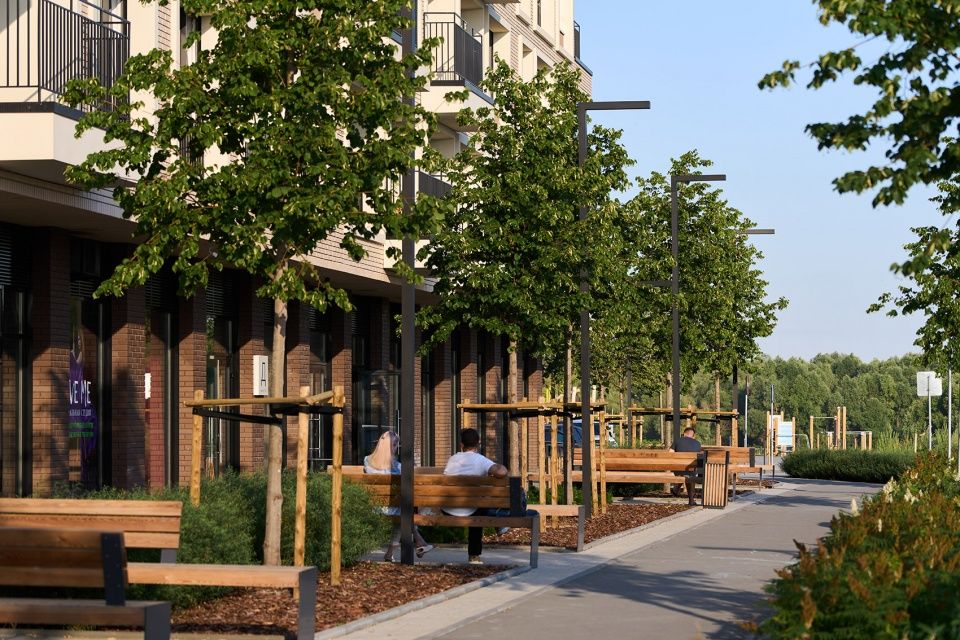
设计雨水花园,并在可控的生长介质中种植喜湿的草类被证明是处理、收集和利用住宅区地标径流的有效方法。植物修复设施还可以防止水涝,为当地区域提供吸水、过滤和储水点,以便后续使用。提高用水效率的另一个关键因素是保护邻近的河流与湖泊。
Designing rain gardens and planting moisture-loving grasses in a controlled growing medium is scientifically proven: it is an effective way to treat, collect and utilise surface runoff in residential areas. Phytoremediation facilities also prevent water logging, providing local spots for absorbing water, filtering and storing it for later use. Another crucial factor of water efficiency is preserving neighbouring rivers and lakes.
▼“European Riverfront”河堤景观,“European Riverfront”, Novosibirsk. Embankment © Maxim Loskutov
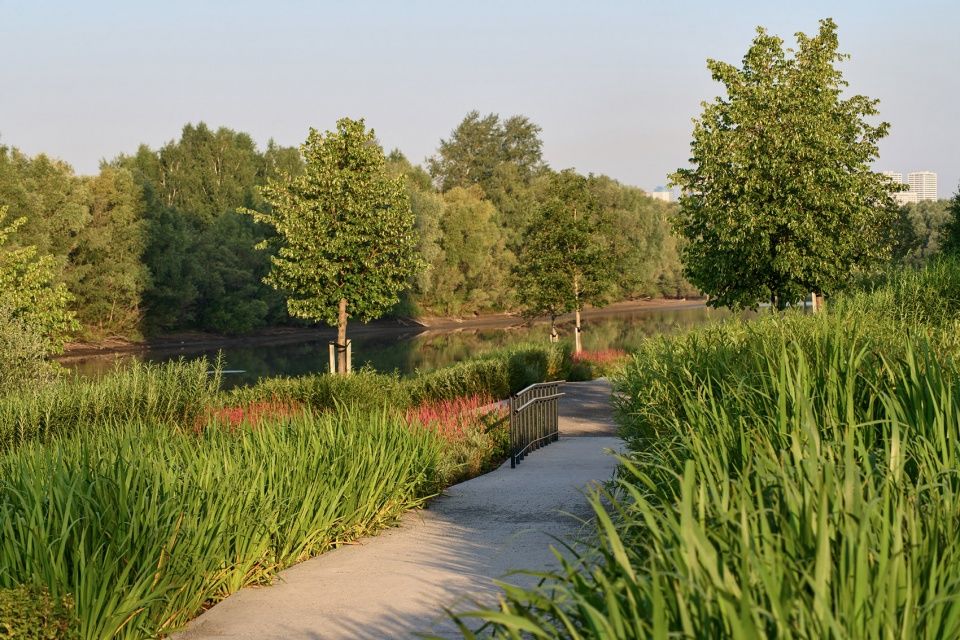
▼莫斯科地区“First Quarter”小区花园,“First Quarter”, Moscow region. Courtyard © Ilya Teplov
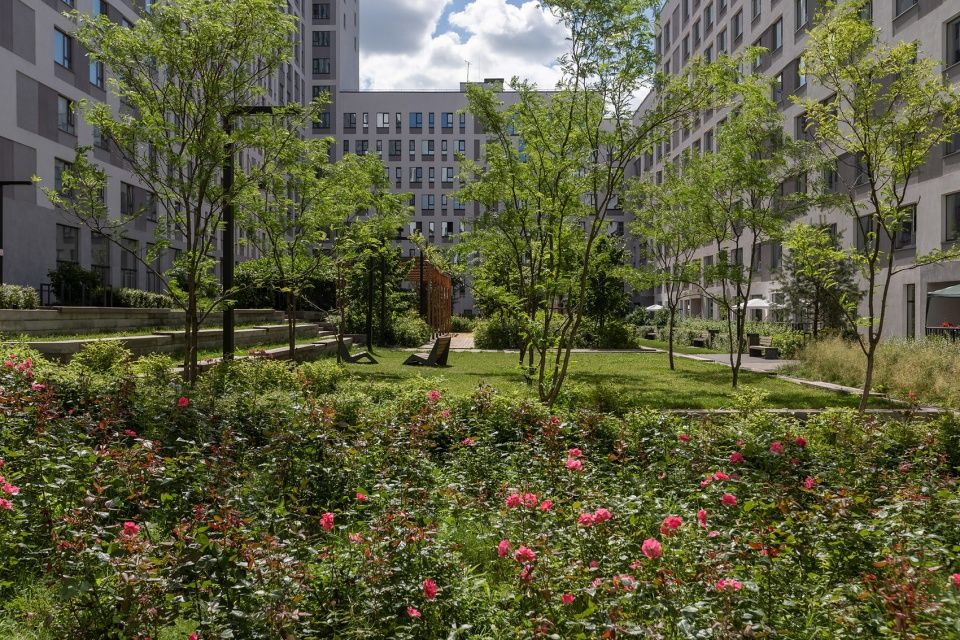
在土壤吸收雨水并滋养植物根系之后,Brusnika在一系列住宅区内对屋顶和停车场径流进行了利用。径流首先通过屋顶的漏斗结构和内部排水管道系统进入雨水花园的“体内”。被收集到的雨水随后渗入均衡调配的堆肥——天然成分和添加物以最优方式组合。在该阶段,堆肥中包含的杂质(大、中型悬浮固体,如硬金属和有机质包裹体)会被清除。污染物进入混合土壤后,部分被植物根系吸收和处理。土壤混合体将重新焕发生机,经过净化后的水最终进入附近的河流、湖泊或者下水道。从整体上看,该水处理系统的效率达到93%,建筑物和屋顶停车场的径流总量减少至90%。
▼Brusnika在项目中使用的雨水处理系统,Rainwater use in Brusnika’s projects © Brusnika
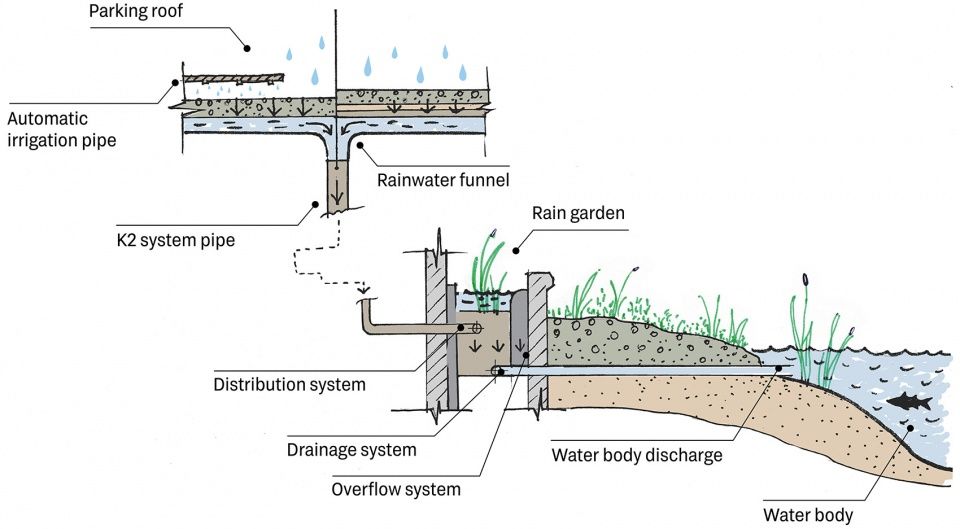
Brusnika uses rooftop and parking roof runoff in its residential areas after the soil absorbs the rainwater and nourishes plant roots. The runoff first enters the ‘body’ of the rain garden through roof funnels and the system of internal drain pipes. After collection, the water infiltrates into the carefully balanced compost – an optimal mix of natural components and additives. At this stage, it frees from impurities – large and medium suspended solids, i.e. hard metals and organic matter inclusions. Pollutants enter the soil mix and are partly absorbed and processed by plant roots. The soil mix revitalises, and purified water enters a neighbouring river, lake, or storm drain. In terms of overall water treatment, the efficiency of this system is 93%. The total runoff volume from building and parking rooftops reduces to 90%.
▼自动灌溉系统,Automatic irrigation system © Ilya Teplov
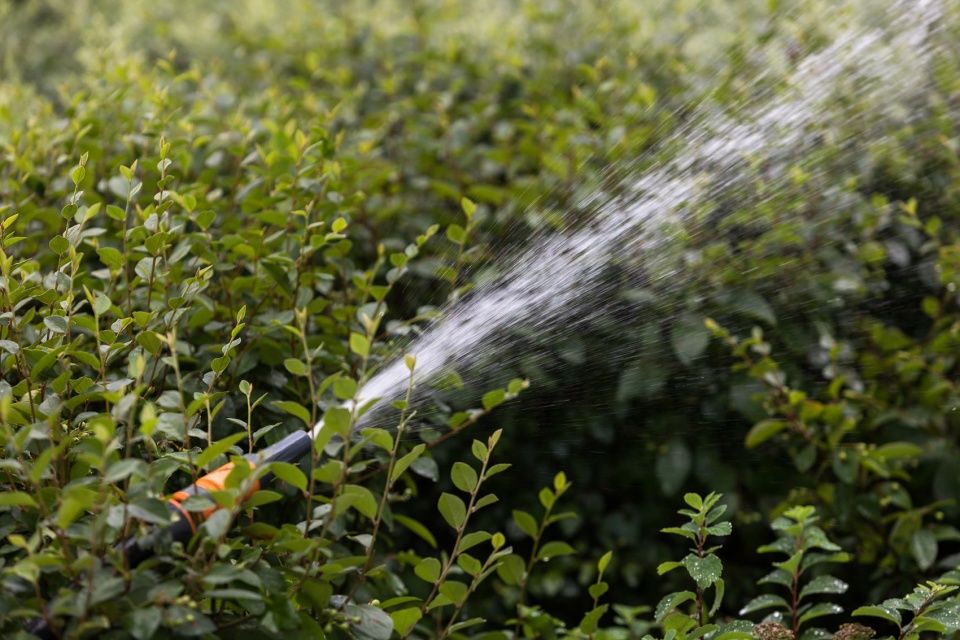
▼叶卡捷琳堡“Sukhodolsky Quarter”小区花园,“Sukhodolsky Quarter”, Yekaterinburg. Courtyard © Ilya Teplov
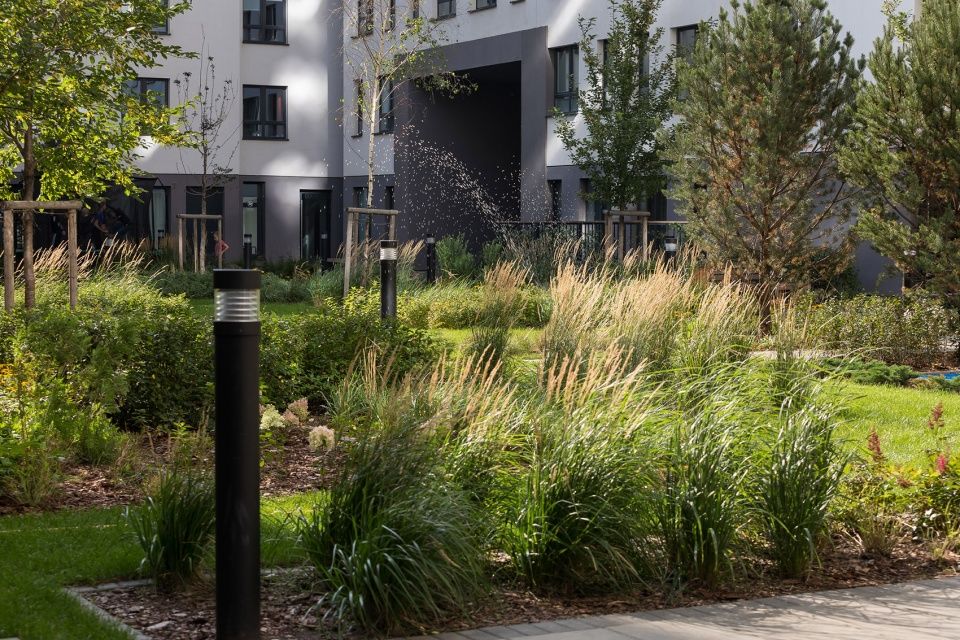
景观工程将雨水的收集和使用分为三个层次,分别是绿色屋顶、停车场屋顶和街道植物修复设施。
Landscape engineering distinguishes three levels of rainwater collection and usage. These are green roofs, trafficked parking roofs, and street phytoremediation facilities.
绿色屋顶 | Green roofs
绿色屋顶在任何项目中都是一个高成本的部分,它通常位于建筑物的非开放地带,因此会对其维护造成影响。屋顶绿化最多只能配备一个自动灌溉系统,所以通常用于住宅区景观美化的植物并不合适——它们必须耐寒,且不需要每天进行照料和维护。
▼屋顶花园技术示意,Extensive roof technology – pie structure © Brusnika
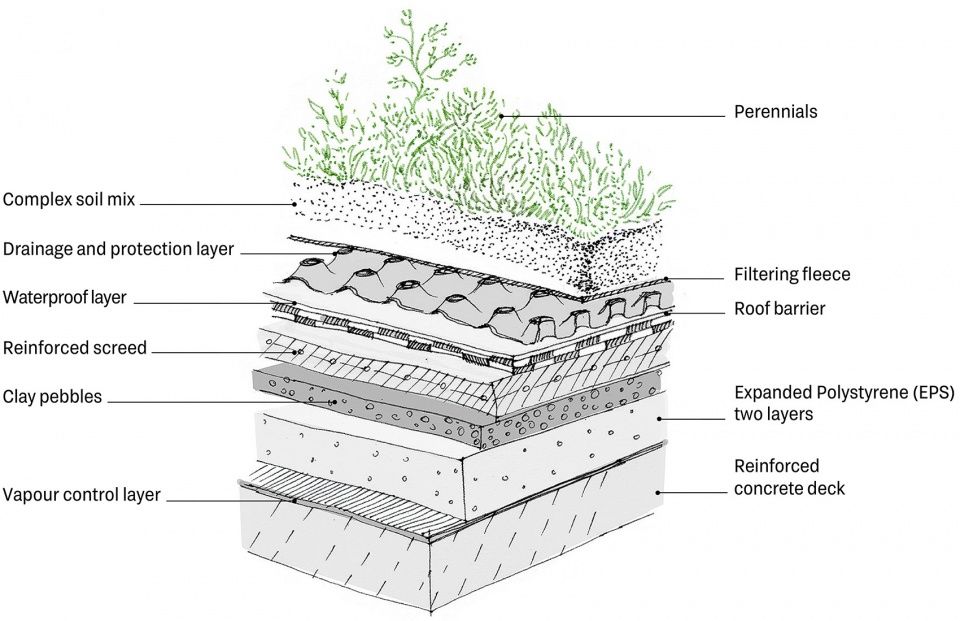
A costly element of any project, a green roof often sits in inaccessible parts of the building, which affects its maintenance. It may be equipped with an automatic irrigation system at most, so plants usually used for landscaping in residential areas are unsuitable – they have to be hardy, with no need to tend them daily.
▼Brusnika在叶卡捷琳堡项目的屋顶花园,Intensive green roof in one of Brusnika’s projects in Yekaterinburg © Ilya Teplov
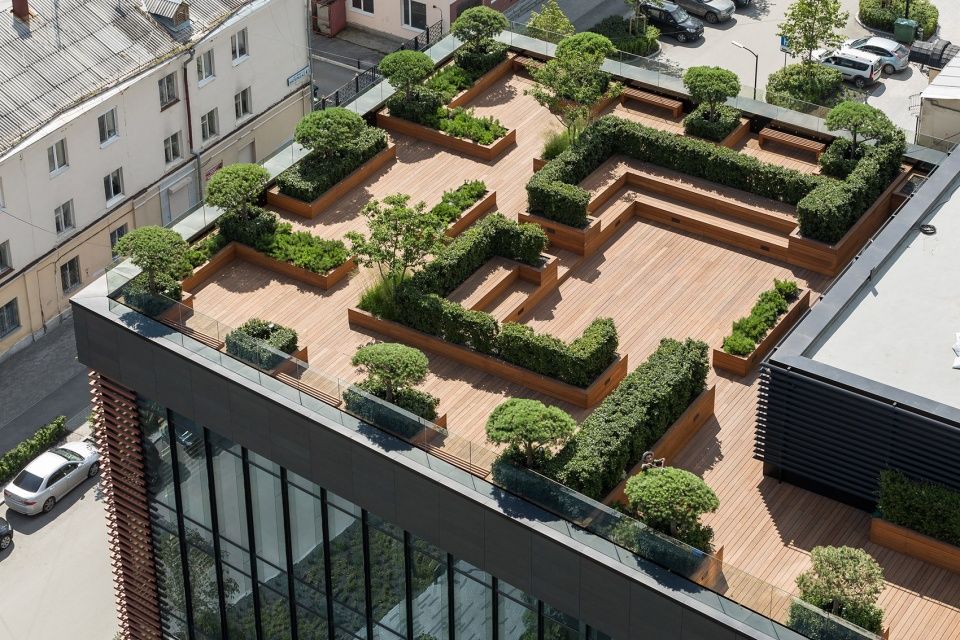
▼叶卡捷琳堡“Na Nekrasova Quarter”屋顶花园,“Na Nekrasova Quarter”, Yekaterinburg. Extensive roof, planting of Ural plants © Alena Skala
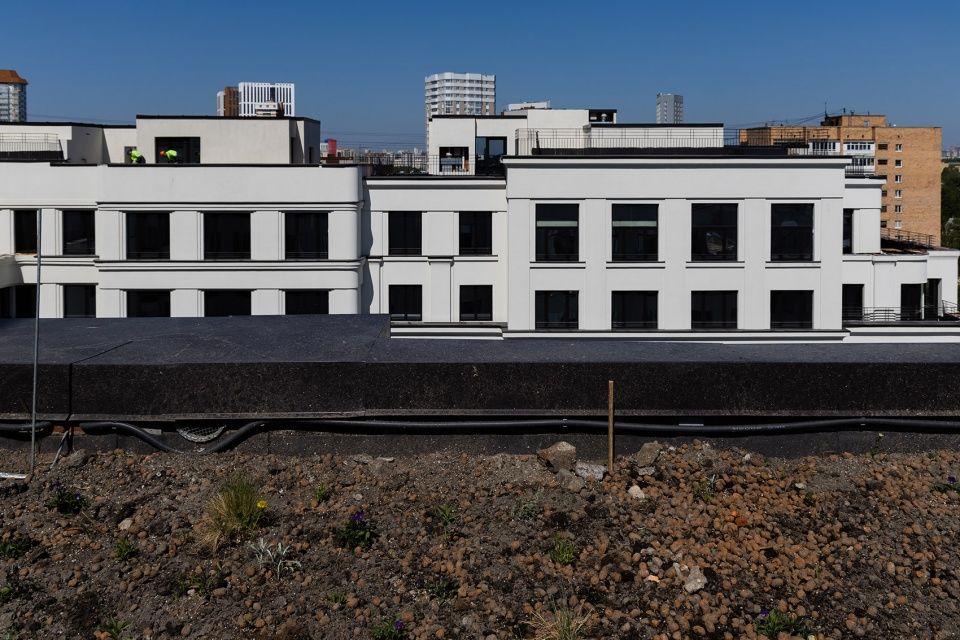
▼本地植物种植,Planting of Ural plants © Alena Skala
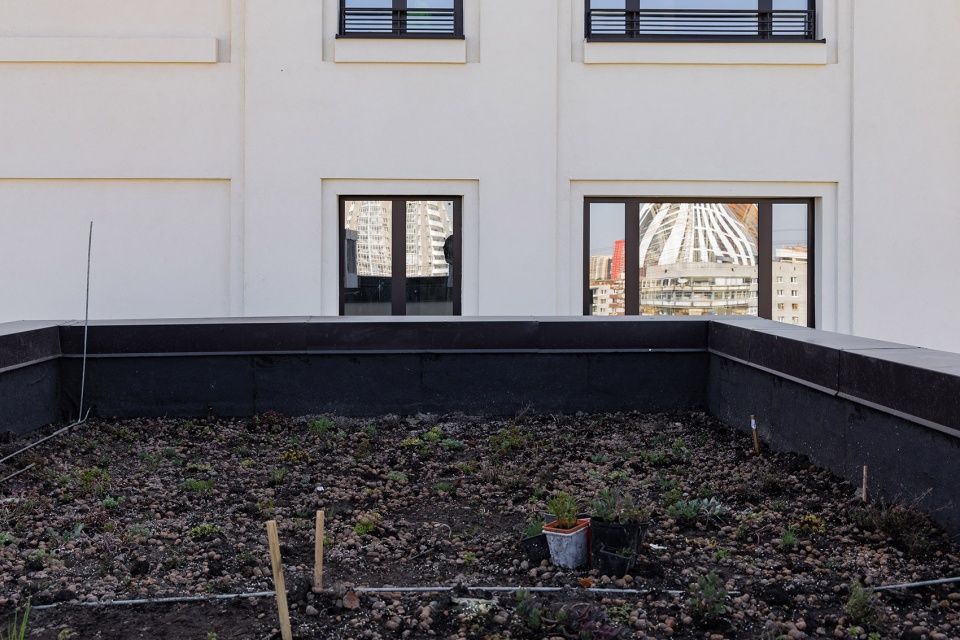
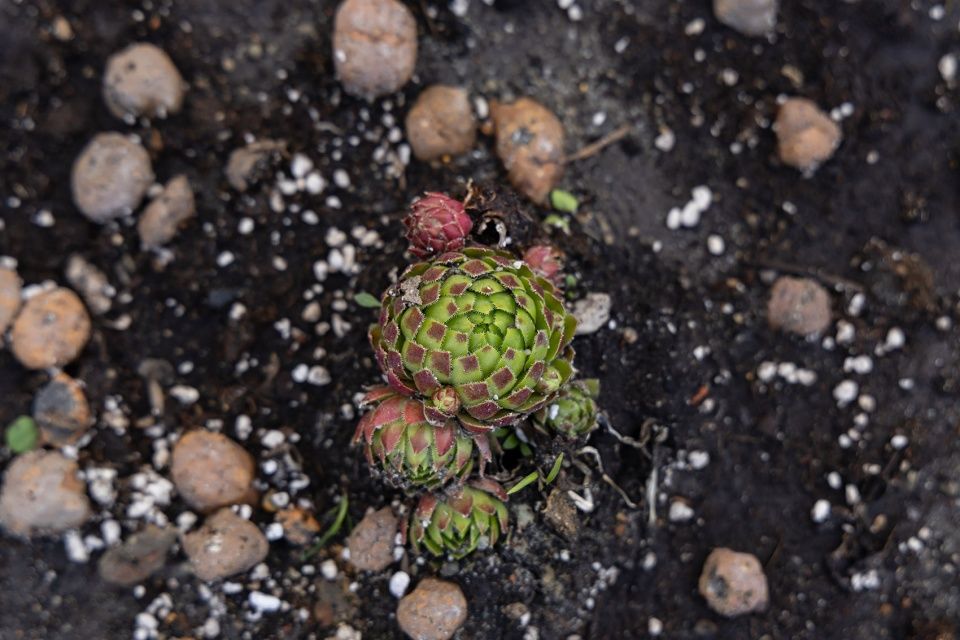
停车场屋顶 | Parking trafficked roof
Brusnika开发的住宅区通常包括封闭的街区、底层临街的零售区和位于停车场屋顶上的内部庭院。因此,屋顶的绿化也就等同于对庭院的绿化。
Brusnika’s residential quarters generally comprise closed-up blocks, a street-facing retail zone on the ground floor, and the inner courtyard on the first-floor level sited on the parking rooftop. So basically, landscaping the roof equals landscaping the yard.
▼叶卡捷琳堡“Northern Quarter”小区停车场屋顶上的花园,“Northern Quarter”, Yekaterinburg. A courtyard on the parking roof © Andrey Kuskalo
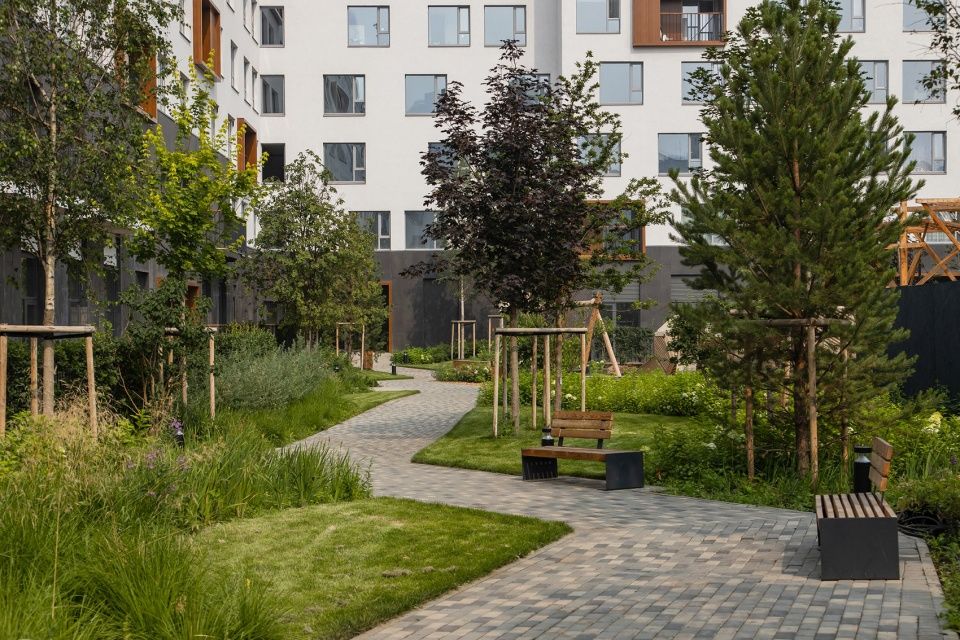
▼秋明市“European Quarter”小区停车场屋顶上的花园,“European Quarter”, Tyumen. A courtyard on the parking roof © Alexander Saskov
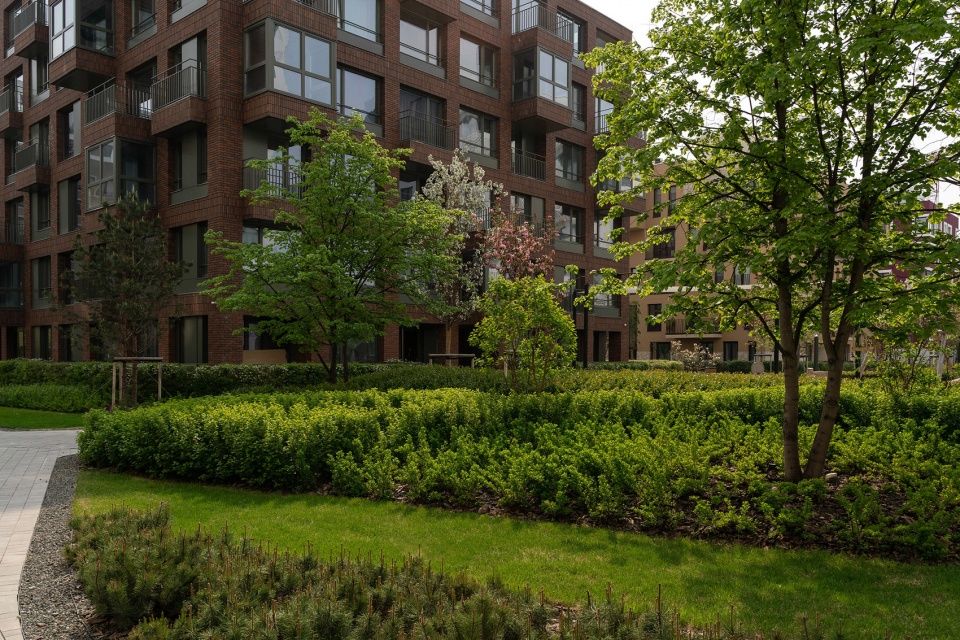
▼叶卡捷琳堡“Southern Quarters”小区停车场屋顶上的花园,“Southern Quarters”, Yekaterinburg. A courtyard on the parking roof © Alena Skala
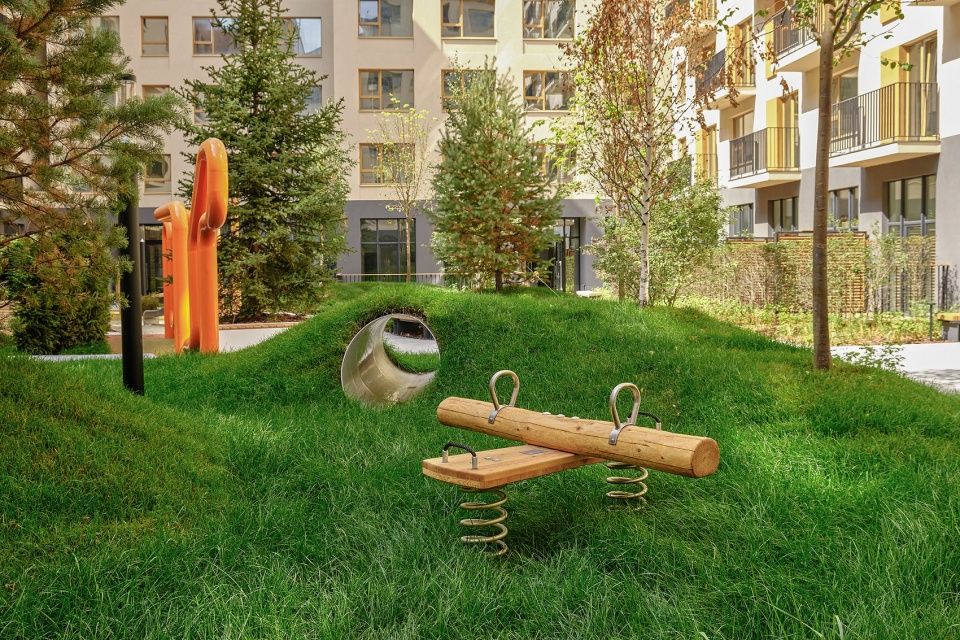
街道植物修复设施 | Street phytoremediation facilities
这些设施包括雨水花园和生物排水沟,即所谓的“wadi”。功能性的绿色缓冲带还能够集中地表径流并将其引向附近的植物。它们可以显著减少公用设施的负荷,使进入雨水管道的径流减少到90%。避免使用复杂的化学物质来清洁街道将有利于防止水污染。
▼街道雨水花园剖面,Sectional view. Street rain garden © Brusnika
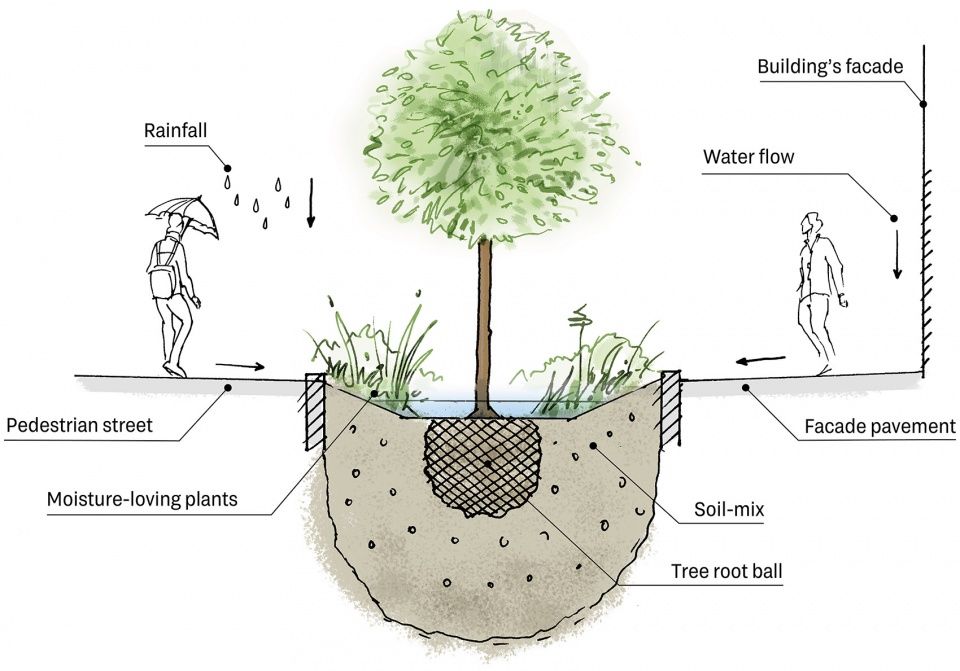
▼秋明市Oktyabrsky Quarter住宅区使用的wadi系统,The wadi system in Oktyabrsky Quarter, Tyumen © Brusnika
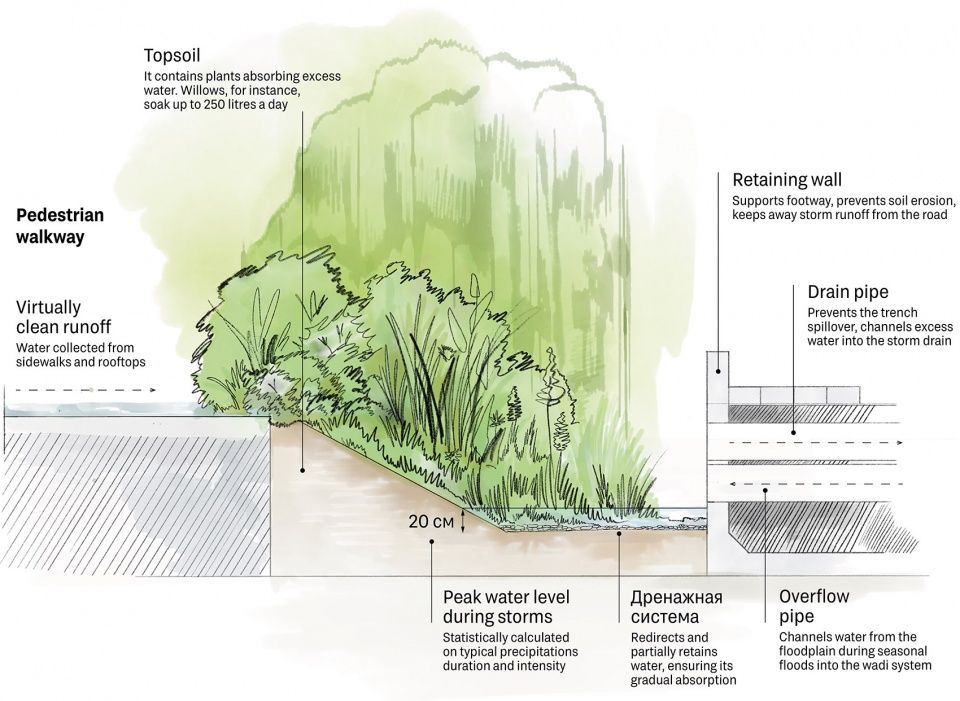
These include rain gardens and bio drainage channels, known as wadi. These functional green buffers also concentrate surface runoff and channel it to feed nearby plants. They sufficiently reduce utility load, with runoff reaching storm drains drop to 90%. By using no complex chemicals for street cleaning, we prevent water pollution.
▼秋明市Oktyabrsky Quarter住宅区街道,“Oktyabrsky Quarter”, Tyumen. Street © Alexander Saskov
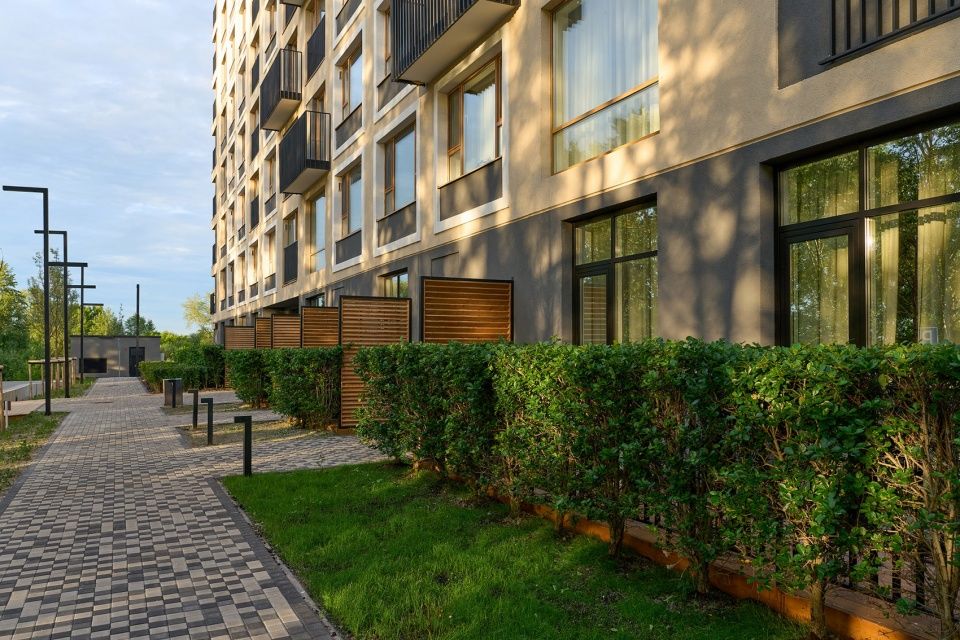
▼Oktyabrsky Quarter住宅区使用的wadi系统,The wadi system in “Oktyabrsky Quarter”, Tyumen © Vitaly Dulger
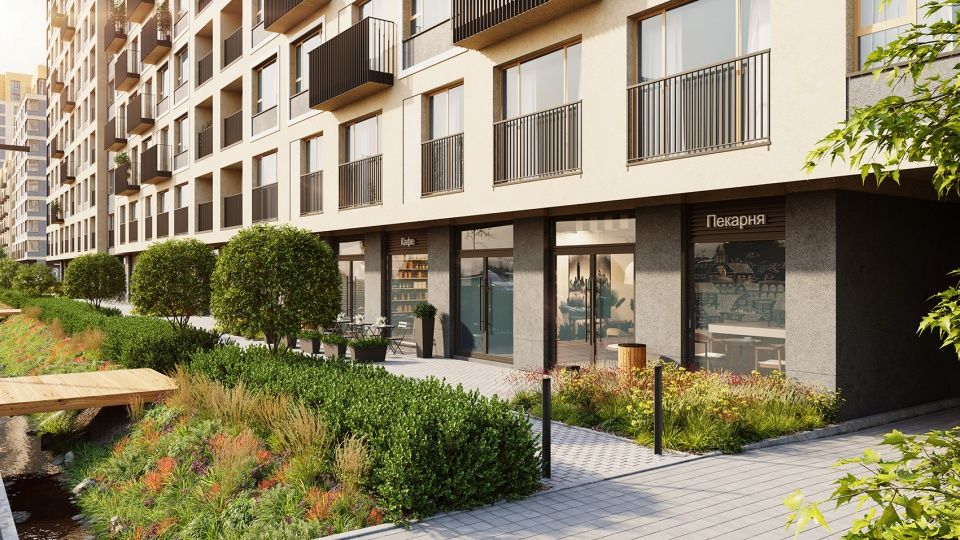
▼针叶树散发出杀菌素,同时带来茂密的树篱,Conifers exude phytoncides and create a dense hedge © Alexander Saskov
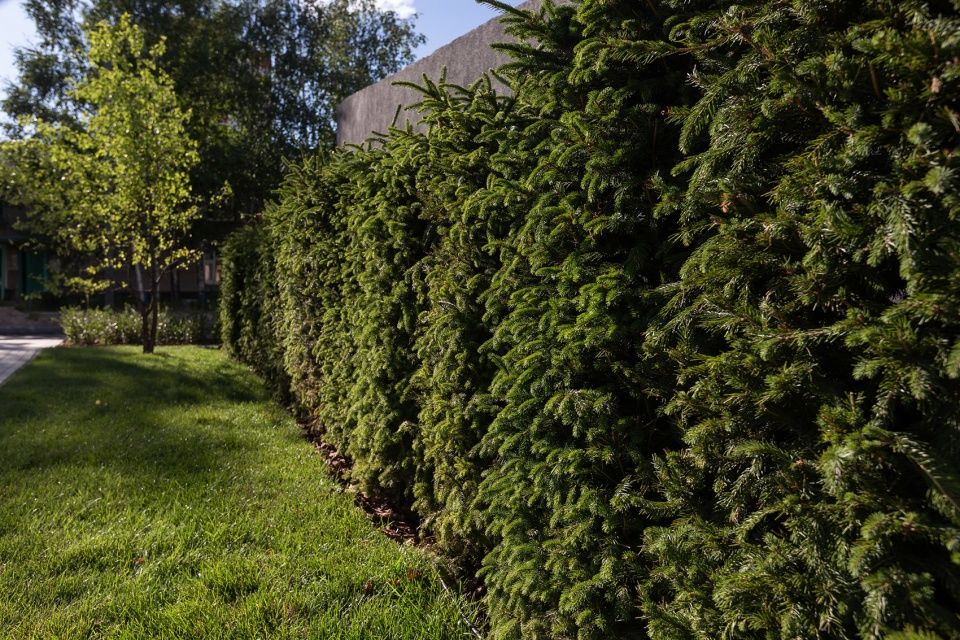
▼2021年秋明市Tikhoe湖,通过人工水坝抽水来清洁流域,Tikhoe Lake, Tyumen. Cleaning the basin by pumping water through an artificial dam, 2021 © Brusnika
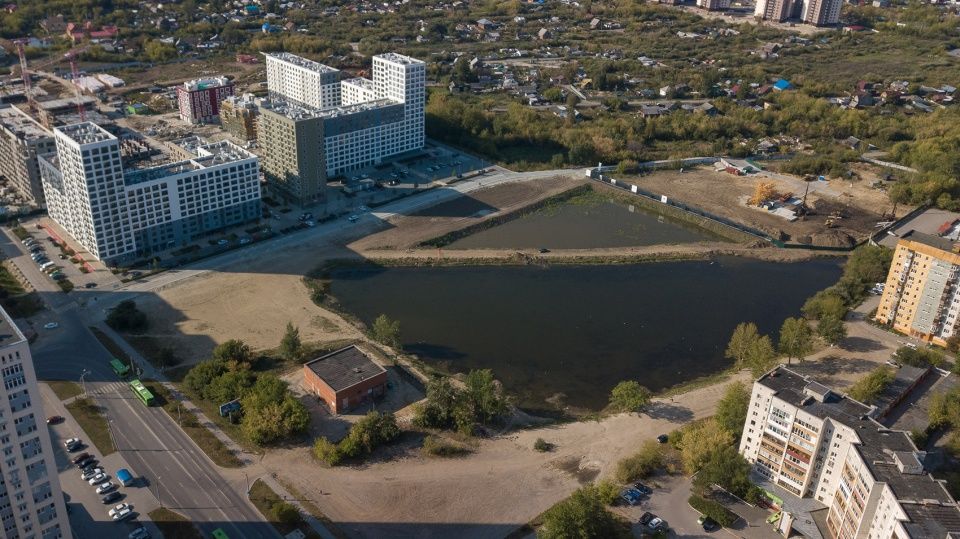
▼2023年夏季的Tikhoe湖,景观日渐成熟,Tikhoe Lake, Tyumen. Landscaping in progress, summer 2023 © Alexander Saskov

▼2023年夏季的Tikhoe湖,Tikhoe Lake, Tyumen. Landscaping in progress, summer 2023 © Maxim Loskutov
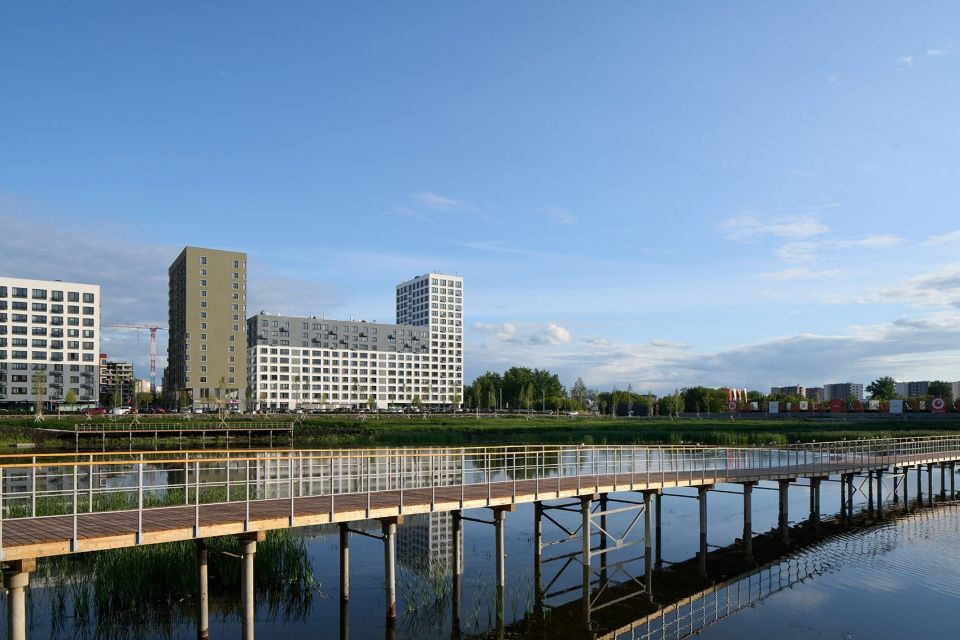
▼Oktyabrsky Quarter住宅区和洪泛平原草地,“Oktyabrsky Quarter”, Tyumen. General view and floodplain meadows © Maxim Loskutov
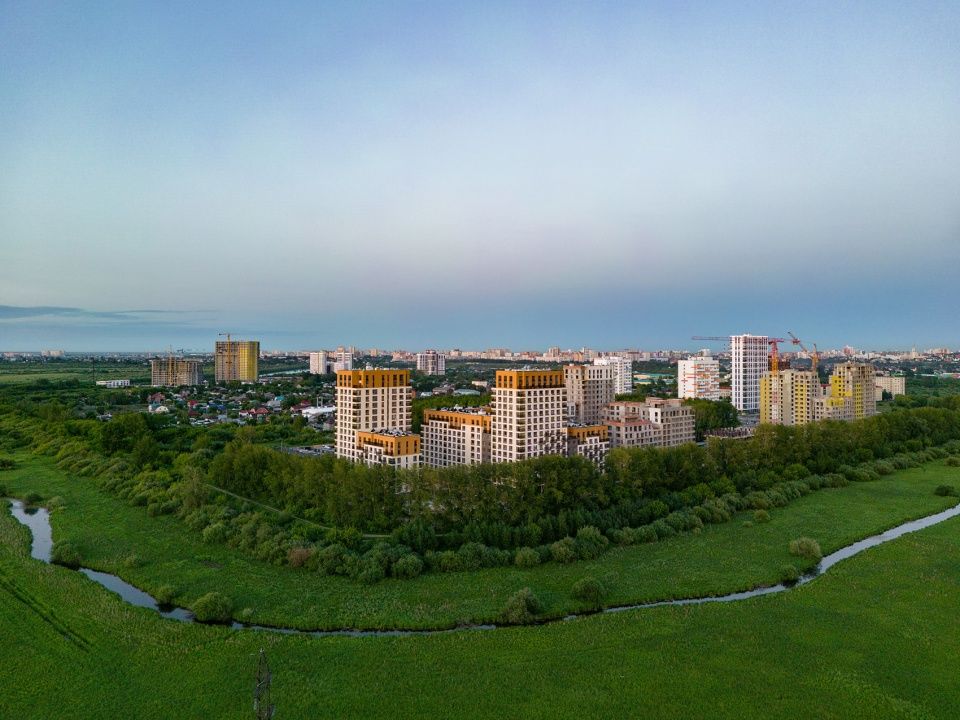
▼Tikhoye湖域采用的植物修复技术。The technology of phytoremediation on Tikhoye Lake, Tyumen © Brusnika
